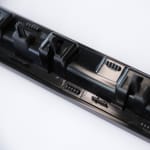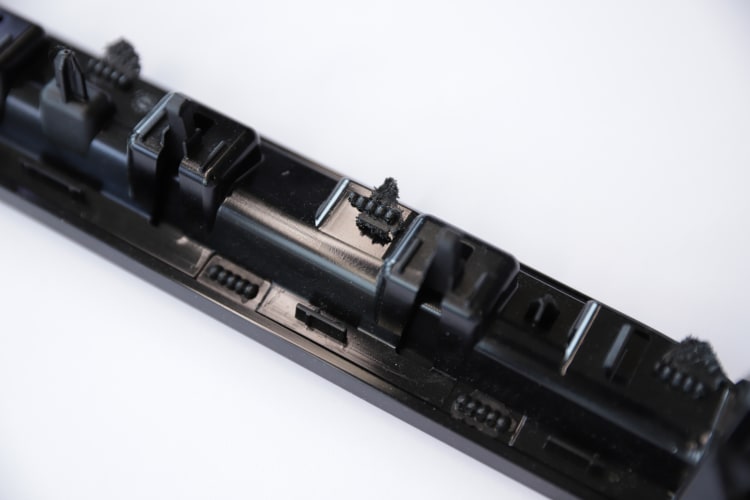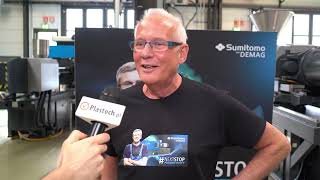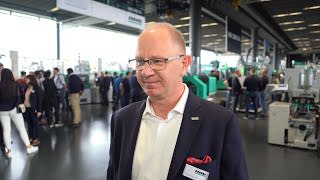
Faced with rising energy costs, many companies have set themselves the target of saving electricity. Against this backdrop, Rinco Ultrasonics has compared two drive technologies used in ultrasonic welding machines in terms of efficiency and presents the differences and advantages of both types - with respect to both how much energy can be saved and the quality of the welding results that can be achieved. Rinco launched its first electrically driven ultrasonic welding machine - the Electrical Motion - back in 2015 as an extension to its product range of pneumatic welding machines.
In the case of ultrasonic welding processes, an electric drive is more energy-efficient than a pneumatic one
Stroke movement and force build-up during welding processes involving ultrasonic welding machines are usually carried out with a pneumatic drive. In recent years, however, the electric drive has become more and more established.
To enable a like-for-like comparison to be made during the test, Rinco compared two machines with identical frequency, power and stroke figures. The only thing that was different was the drive. With respect to the Electrical Motion with electric drive, the idling of the servo control unit (SCU) was also included in the calculations, while the machine with pneumatic drive was operated at 6 bar.
"We expected the electrically driven ultrasonic welding machine to come out on top in terms of consumption, but we hadn’t anticipated that the difference would be so great," says Jürgen Baumert, Head of R&D at Rinco Ultrasonics.
The Electrical Motion uses 78% less energy compared to the pneumatically driven ultrasonic welding machine. The reasons behind this can be found in the welding process itself. For movement tasks, the electric drive is more efficient by a clear margin. While in terms of dwell times, the pneumatic drive has the advantage. To maintain position, the pneumatic machine consumes hardly any energy. However, as the dwell time for ultrasonic welding processes is very short - usually less than a second - the impact of this is almost negligible and is outweighed by the advantage achieved by the electrically driven ultrasonic welding machine.
In addition, the system-related compressed air leaks that occur in compressed air systems and consume energy unnecessarily even during downtimes can be left out of the equation when using the electric drive. This is a particularly important aspect as compressed air is one of the most expensive energy sources in the industry.
Improvements in the quality of welding results
Ultrasonic welding machines don’t just offer advantages when it comes to saving energy - they can also help to boost quality. Positions can be approached and held more precisely and the stroke movement is also freely programmable. The following can be programmed:
- The start position and the actuator speed
- The braking point and the touchdown speed
- The welding process itself in 10 increments, selectable as force and speed profile
- The return stroke speed
This flexible parameterisation delivers even better welding results that can be reproduced even more precisely.
One tangible example is a rivet application which Rinco Ultrasonics recently sampled successfully in the Competence Center. The upper component was made from PA, while the lower consisted of PC-ABS, and the two were joined by means of riveting. The application was tested on both a pneumatic and electric ultrasonic welding machine. "A durable hemispherical bead that met the customer’s requirements was able to be achieved on both machines," says Simon Hug, Head of the Ultrasonic Competence Center at Rinco Ultrasonics. "However, we were able to adjust the parameters much more flexibly on the Electrical Motion. This improved the rivet strength and a much more attractive groove was achieved. With the pneumatically driven machine, material spillage resulted in beads that were not fully formed. In addition, using the Electrical Motion enabled us to almost halve the time taken for the welding process compared to the pneumatic standard machine, as the start position for the welding process can be freely selected with the Electrical Motion. This achieves significant savings in terms of travel time. All of these aspects combined led the customer to choose the Electrical Motion."


Ultrasonic processes are efficient whatever the drive type
Welding and cutting processes involving ultrasonics are generally recognised as being energy-saving technologies. Tools do not heat up as they do in thermal welding processes and there is no need for accessories such as screws and adhesives. Cycle times are short and material can be saved thanks to a narrow weld seam.



